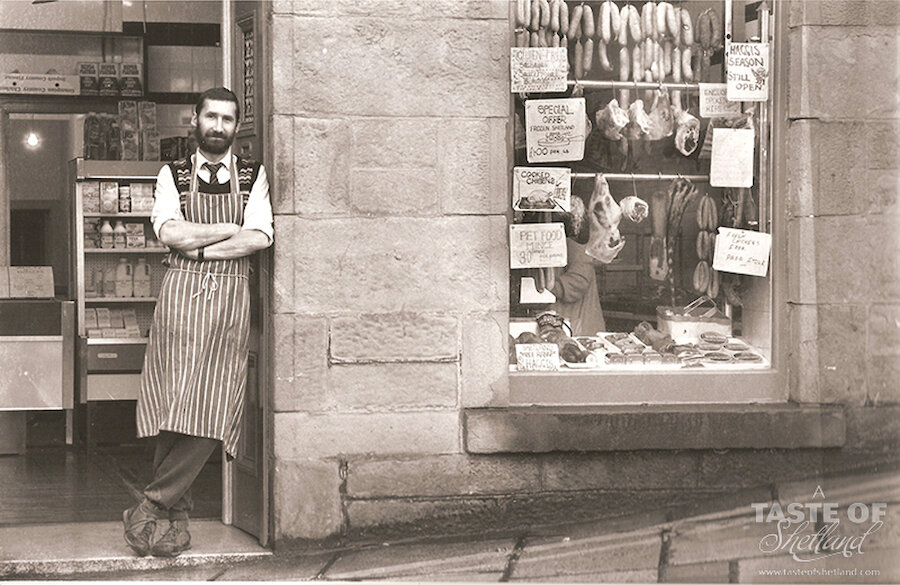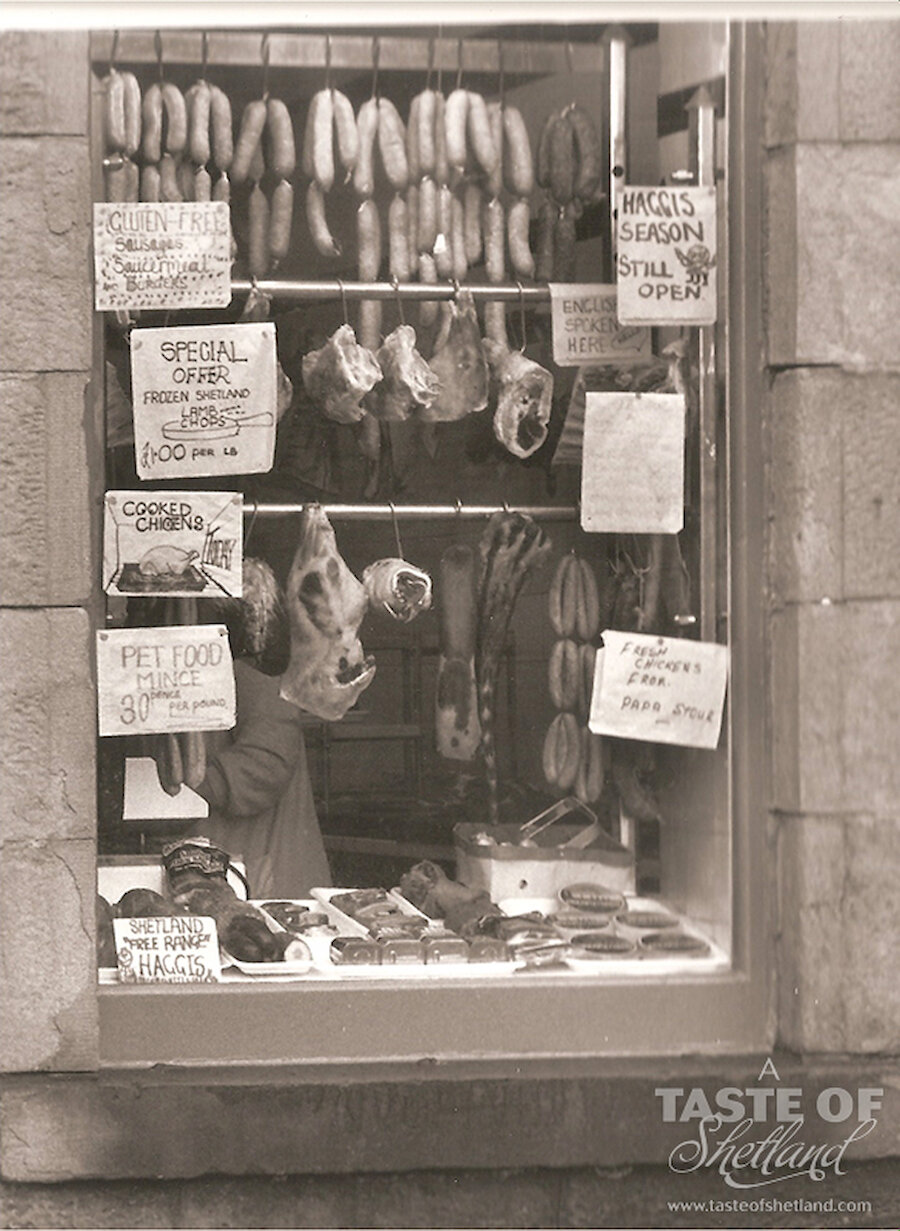Reestit Mutton is a variation of the Scandinavian skerpikjøt, an air dried mutton, or vivda, Norse for 'leg meat'. It is a traditional Shetland way of preserving mutton with salt for consumption during the winter months. The mutton is first salted in brine and was then traditionally hung in the rafters (reest) of houses, where the peat smoke with add flavour and help preserve the meat. It could very likely be called Shetland's national dish.
The first time I'd ever tried reestit mutton soup was during the annual Up Helly Aa celebrations. It was running late into the night and there was a very busy group of women in the local hall I was at serving polystyrene cups full of piping hot reestit mutton soup and trays of salt beef bannocks to the revellers.
It was an absolutely fantastic cup of soup, I recall. The next time I was in my local butchers, the old Globe Butchers on Commercial Road, I made sure I picked up a copy of their reestit mutton soup recipe.
That recipe has sat, neglected, in my cookery notebook ever since! I had full intentions of making it, but this never happened until, after the Globe Butchers closed earlier this year, I stumbled upon a table at one of the Tingwall Farmers' Markets where they were selling off the last of their reestit mutton stock.
This was my last chance to buy their own make reestit mutton to use with their own recipe, so I picked up a pack and popped it in the freezer for use this winter.
Now, each butchers has its own secret recipe for making reestit mutton, but before the middle of the 1970s this process was something done at home. Reestit mutton can usually be seen hanging in butchers windows and in sheds around rural Shetland.
"REESTIT MUTON HAS AN ACQUIRED TASTE THAT YOU ACQUIRE AT THE FIRST TASTE" was the slogan that butcher Jim Grunberg of Smith & Co came up with to promote his own reestit mutton back in the 1980s. When his supply of home-preserved reestit mutton stopped in the mid-70s he began making his own. Jim was the very first butcher to make reestit mutton in Shetland on a commercial basis.
A hot bowl of reesit mutton soup served with buttered bread or some floury Shetland bannocks can not be beat. Locals grow up on the stuff and have a fond nostalgia for it.
There are many variations of the recipe, for example, chef Martin Wishart makes his with large chunks of vegetables including the floury Shetland Black potato, leaving the meat whole, served cold, alongside.
How do you make your reestit mutton soup?
Reestit Mutton Soup
Course: Main
Servings: 6 people
Prep Time: 15 minutes
Cook Time: 2.5 hours
Ingredients:
- Reestit mutton - 2 lb
- Cold water - (to cover)
- Onion - 1 (finely diced)
- Potatoes - 300 grams (peeled and finely diced)
- Turnip - 225 grams (peeled and finely diced)
- Carrots - 200 grams (peeled and finely diced)
- Water - 2 pints (or lamb stock)
Instructions:
- Place the reestit mutton in a large pot and cover with cold water. Bring to the boil and continue to boil for almost two hours, or until tender. Remove the meat from the pan.
- Reserve a ladleful of the cooking water. Skim off the fat and add more water (or lamb stock) to your own taste.
- Add the chopped potatoes, carrots, turnip and onion and boil until tender, about 20 minutes.
- Mash the vegetables into smaller pieces, if desired, and add the reestit mutton, finely chopped for the last few minutes of cooking.
- Serve with buttered bread.
Storage advice for unused reestit mutton: Store in a dry environment. Do not refrigerate. Alternatively, cut to your requirements and freeze.
With thanks to Jim Grunberg for the photographs by Smirk and of Smith & Co. butchers.





